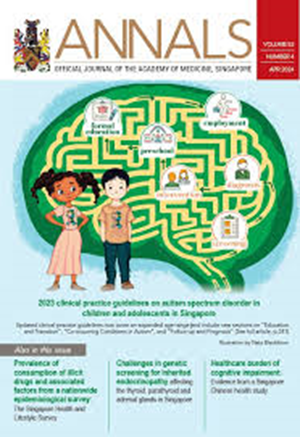Fetal congenital heart diseases: Diagnosis by anatomical scans, echocardiography and genetic tests
IF 5.2
4区 医学
Q2 Medicine
引用次数: 0
Abstract
Objective: To determine the distribution of major fetal congenital heart diseases (CHDs) diagnosed antenatally during routine second-trimester obstetric anatomical scans in an unselected population at a single tertiary centre and to characterise and stratify risk factors, genetic diagnosis and long-term health at 4 years old. Method: A single-centre cohort study of all major fetal CHDs detected on routine obstetric fetal anatomical ultrasound scans between January 2014 and December 2017 was performed in an unselected population. Demographic details, fetal echocardiogram reports, genetic test results, delivery outcomes and postnatal progress were stratified by CHD subtype. Results: Of 20,031 screened pregnancies, 109 pregnancies (0.53%) had major fetal CHDs. The most common subtypes were coarctation of aorta (17.4%), transposition of great arteries (16.5%), and tetralogy of Fallot and univentricular hearts (13.8% each). Of the 60.5% that underwent confirmatory genetic testing—mostly conventional karyotyping and testing for 22q11 microdeletion—about a quarter had abnormalities, of which 22q microdeletion was the most common. We had complete obstetric data in 85 pregnancies (78%), of which 76.5% progressed to live birth. Among these, 92.1% of postnatal echocardiograms concurred with antenatal ones. At 4 years old, 43.2% of offspring had no medical or developmental issues, 20.0% had mild medical or developmental issues, 21.5% had major medical or developmental issues, and 12.3% had deceased. Conclusion: Fetal echocardiograms accurately diagnose CHDs. Future studies should evaluate the roles of chromosomal microarray and next-generation sequencing in diagnosing CHD.胎儿先天性心脏病:解剖扫描、超声心动图和基因检测诊断
目的:确定在单一三级医疗中心的未选择人群中,在常规妊娠中期产科解剖扫描中产前诊断出的主要胎儿先天性心脏病(CHDs)的分布,并对4岁时的危险因素、遗传诊断和长期健康进行特征和分层。方法:对2014年1月至2017年12月期间在常规产科胎儿解剖超声扫描中发现的所有主要胎儿CHDs进行单中心队列研究,未选择人群。人口统计细节、胎儿超声心动图报告、基因检测结果、分娩结局和产后进展按冠心病亚型分层。结果:在20,031例筛查妊娠中,109例(0.53%)存在严重的胎儿CHDs。最常见的亚型是主动脉缩窄(17.4%),大动脉转位(16.5%),法洛四联症和单室心脏(各13.8%)。60.5%的人接受了确证性基因检测——主要是常规的核型和22q11微缺失检测——大约四分之一的人有异常,其中22q微缺失最为常见。我们有85例妊娠(78%)的完整产科资料,其中76.5%进展为活产。其中92.1%的产后超声心动图与产前超声心动图吻合。在4岁时,43.2%的后代没有医疗或发育问题,20.0%有轻微的医疗或发育问题,21.5%有严重的医疗或发育问题,12.3%死亡。结论:胎儿超声心动图能准确诊断冠心病。未来的研究应评估染色体微阵列和下一代测序在诊断冠心病中的作用。
本文章由计算机程序翻译,如有差异,请以英文原文为准。
求助全文
约1分钟内获得全文
求助全文
来源期刊

Annals Academy of Medicine Singapore
医学-医学:内科
CiteScore
4.90
自引率
5.80%
发文量
186
审稿时长
6-12 weeks
期刊介绍:
The Annals is the official journal of the Academy of Medicine, Singapore. Established in 1972, Annals is the leading medical journal in Singapore which aims to publish novel findings from clinical research as well as medical practices that can benefit the medical community.
 求助内容:
求助内容: 应助结果提醒方式:
应助结果提醒方式:


